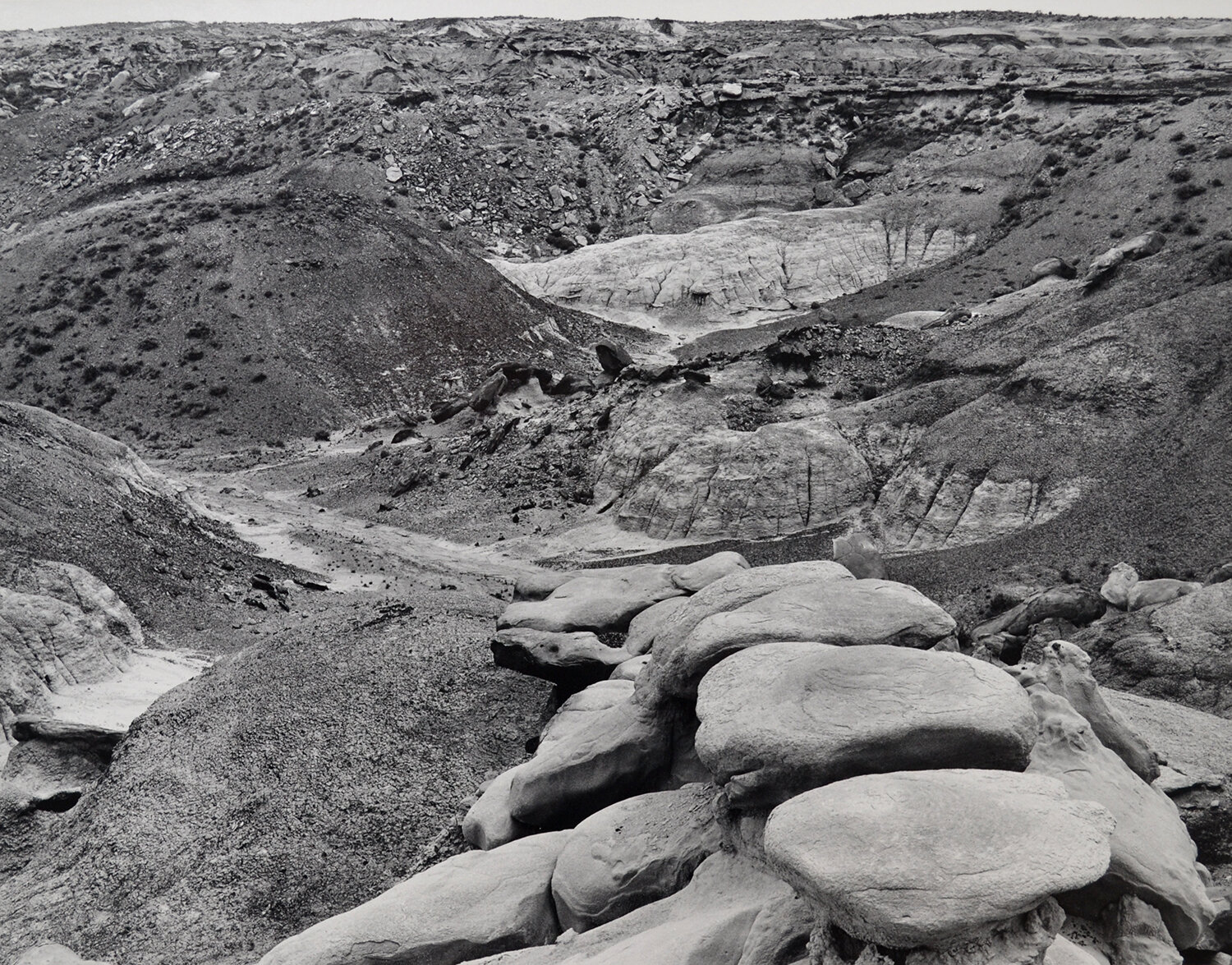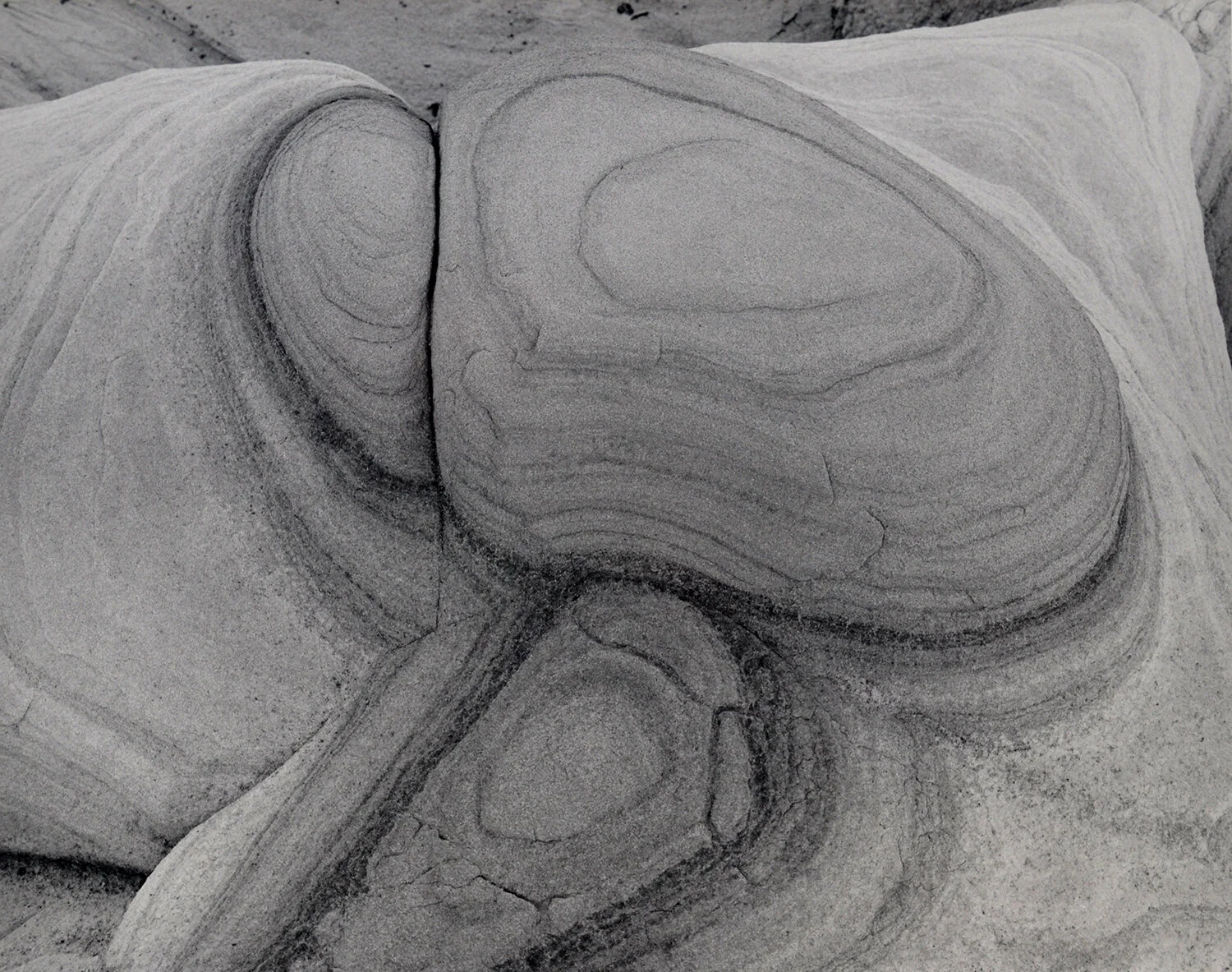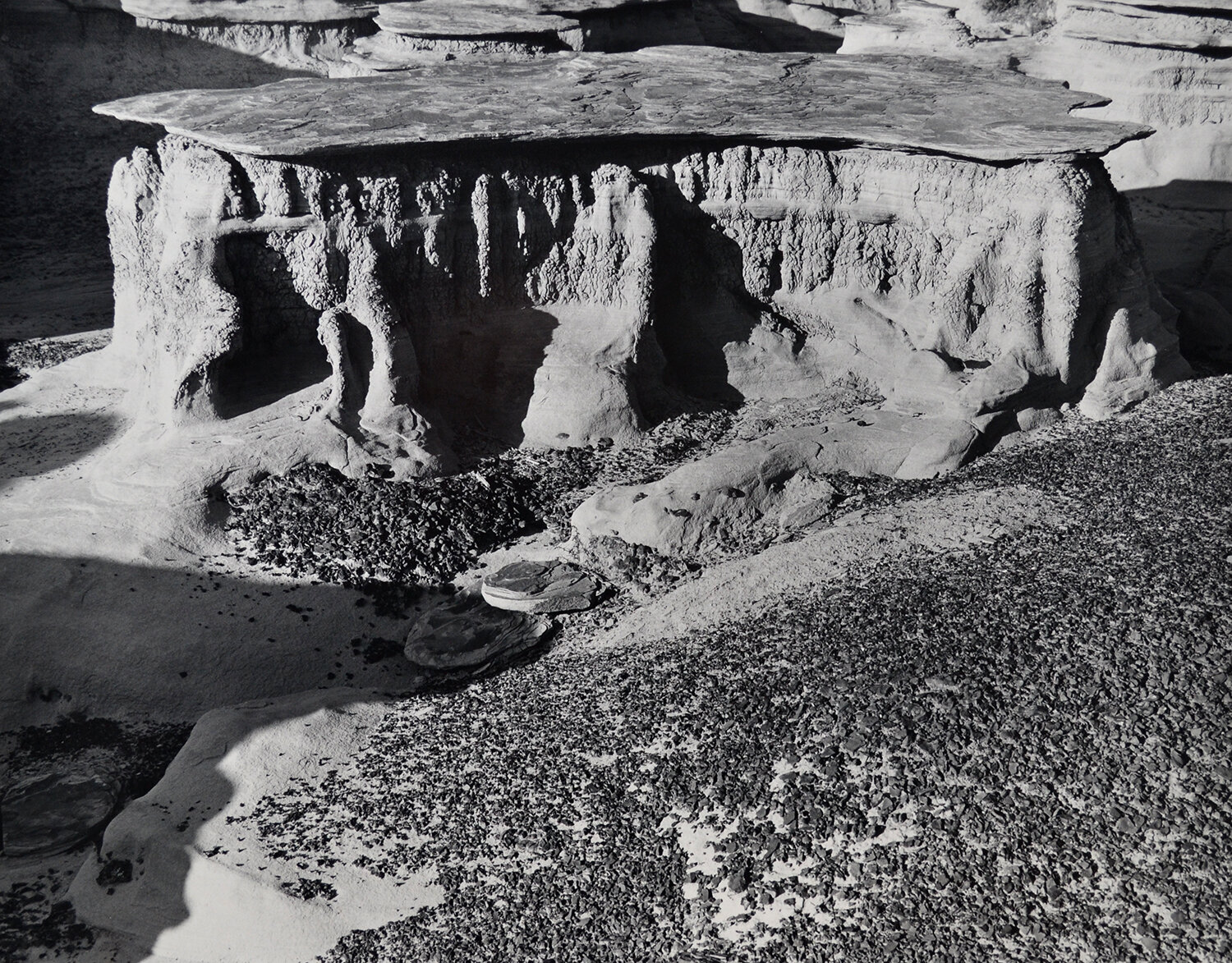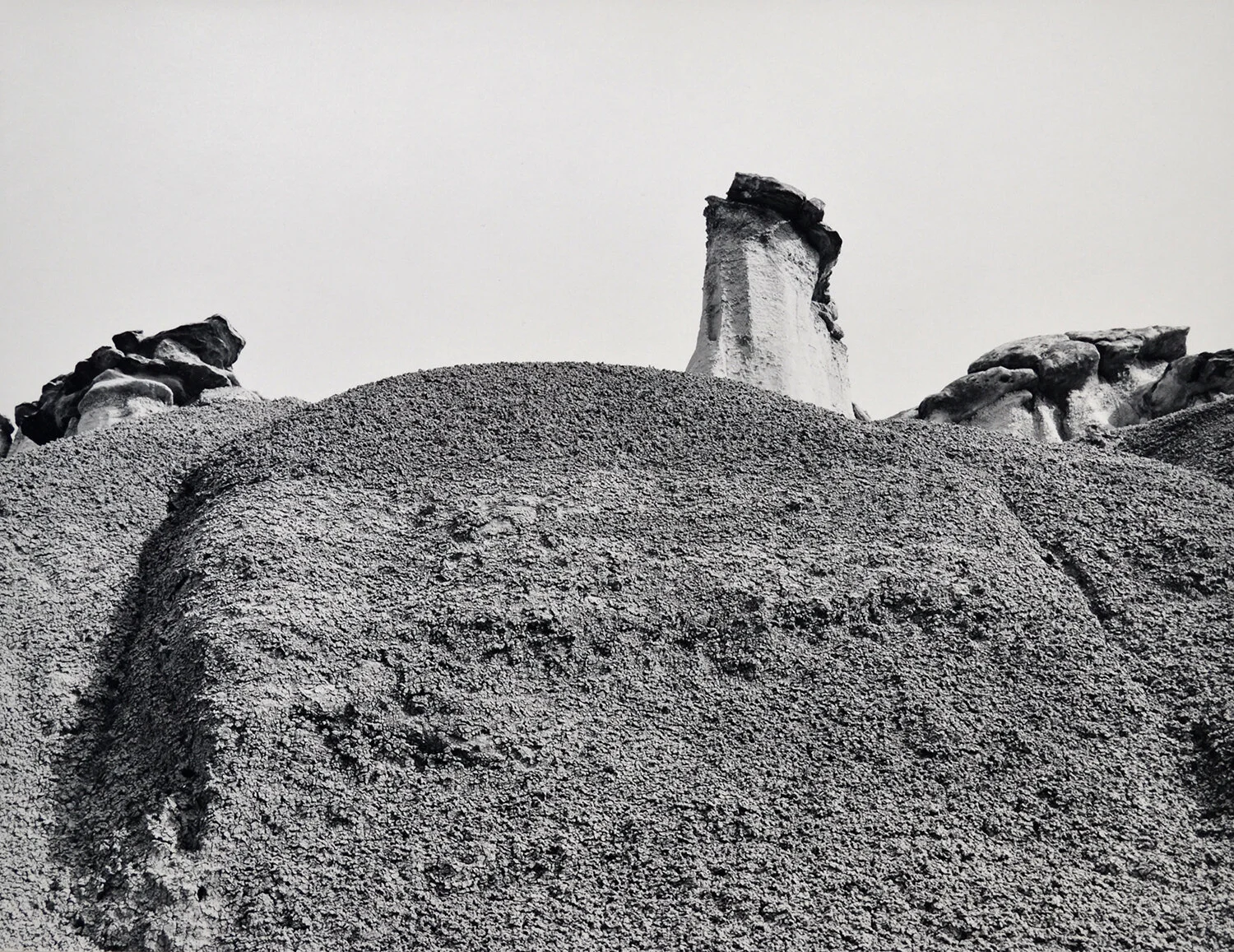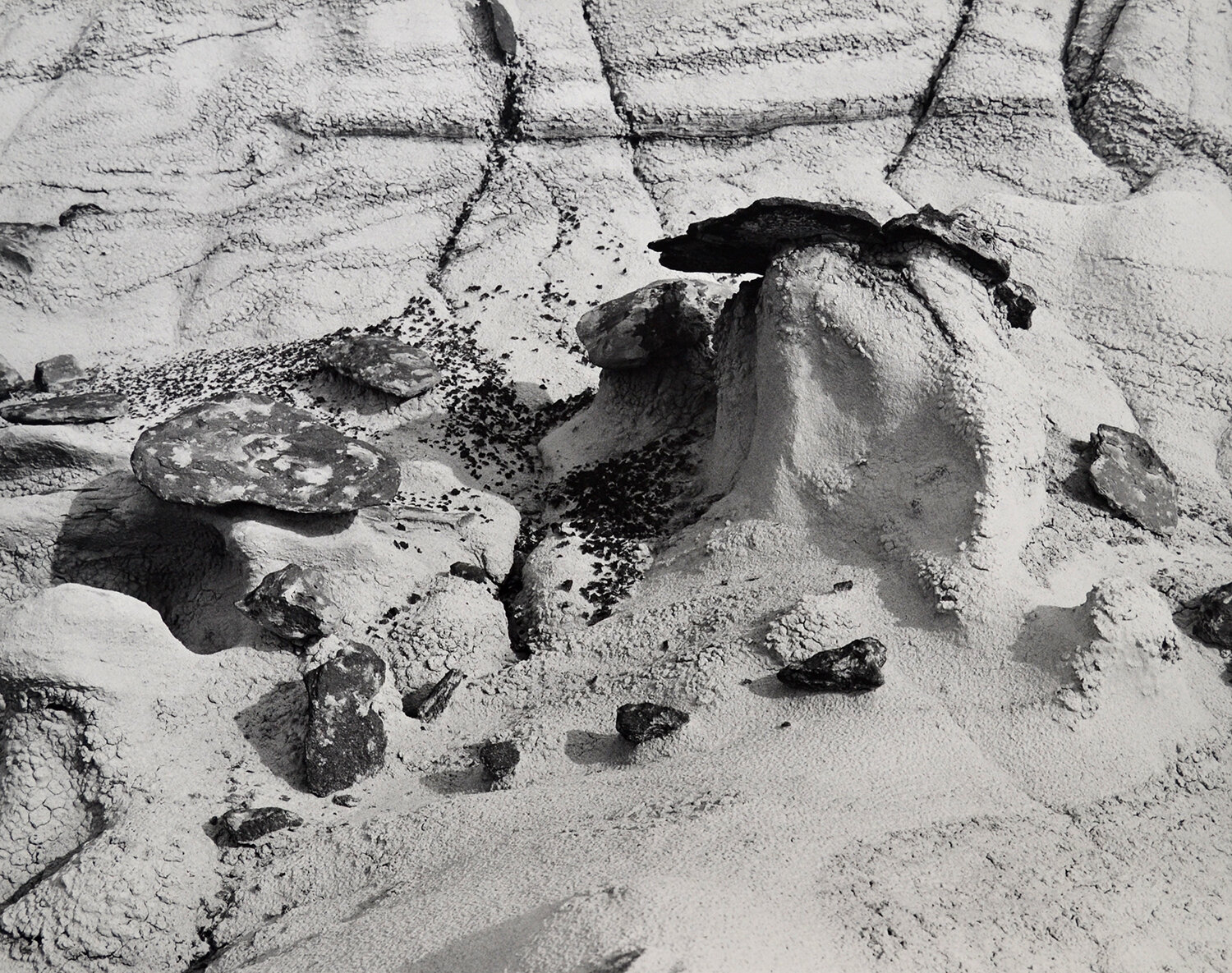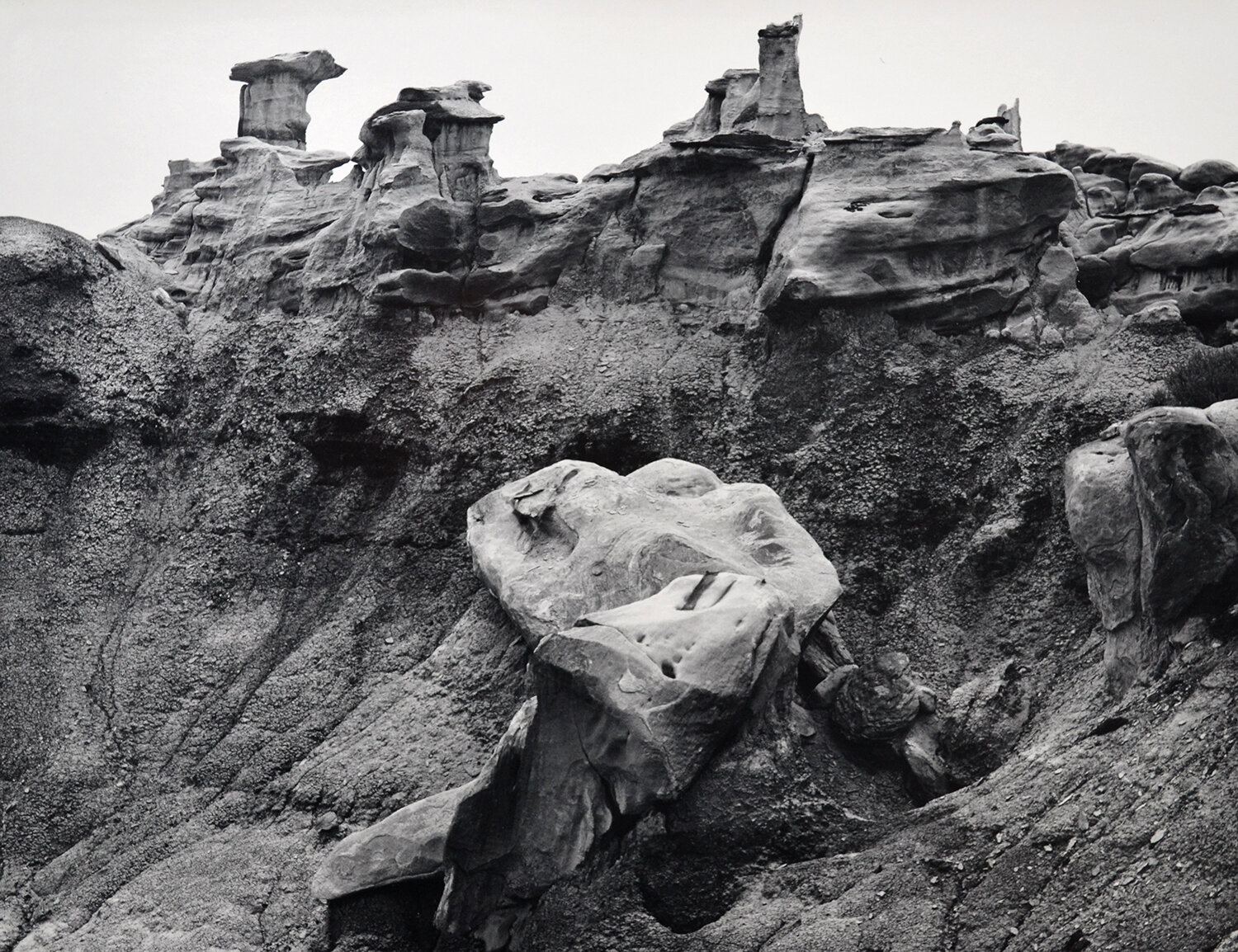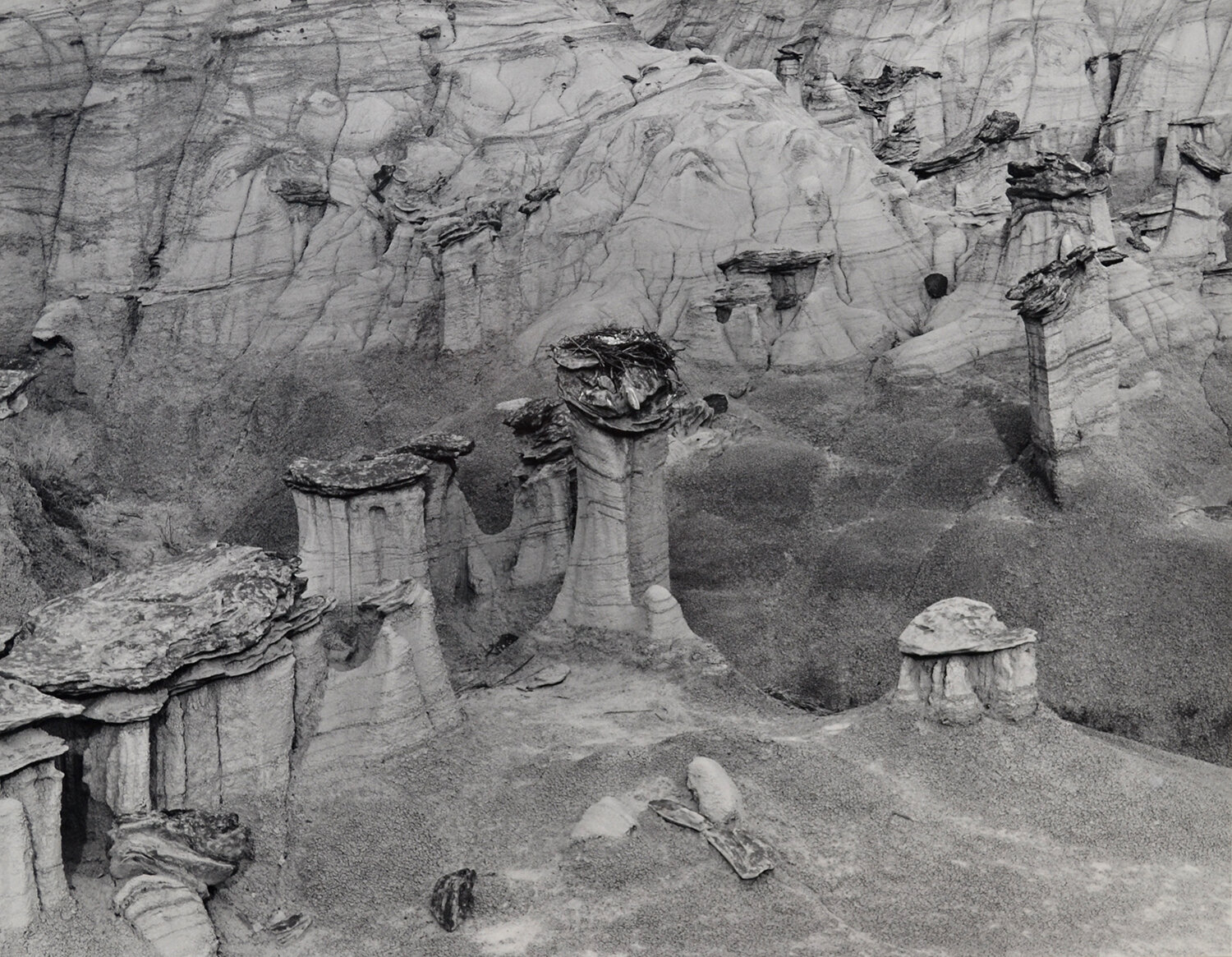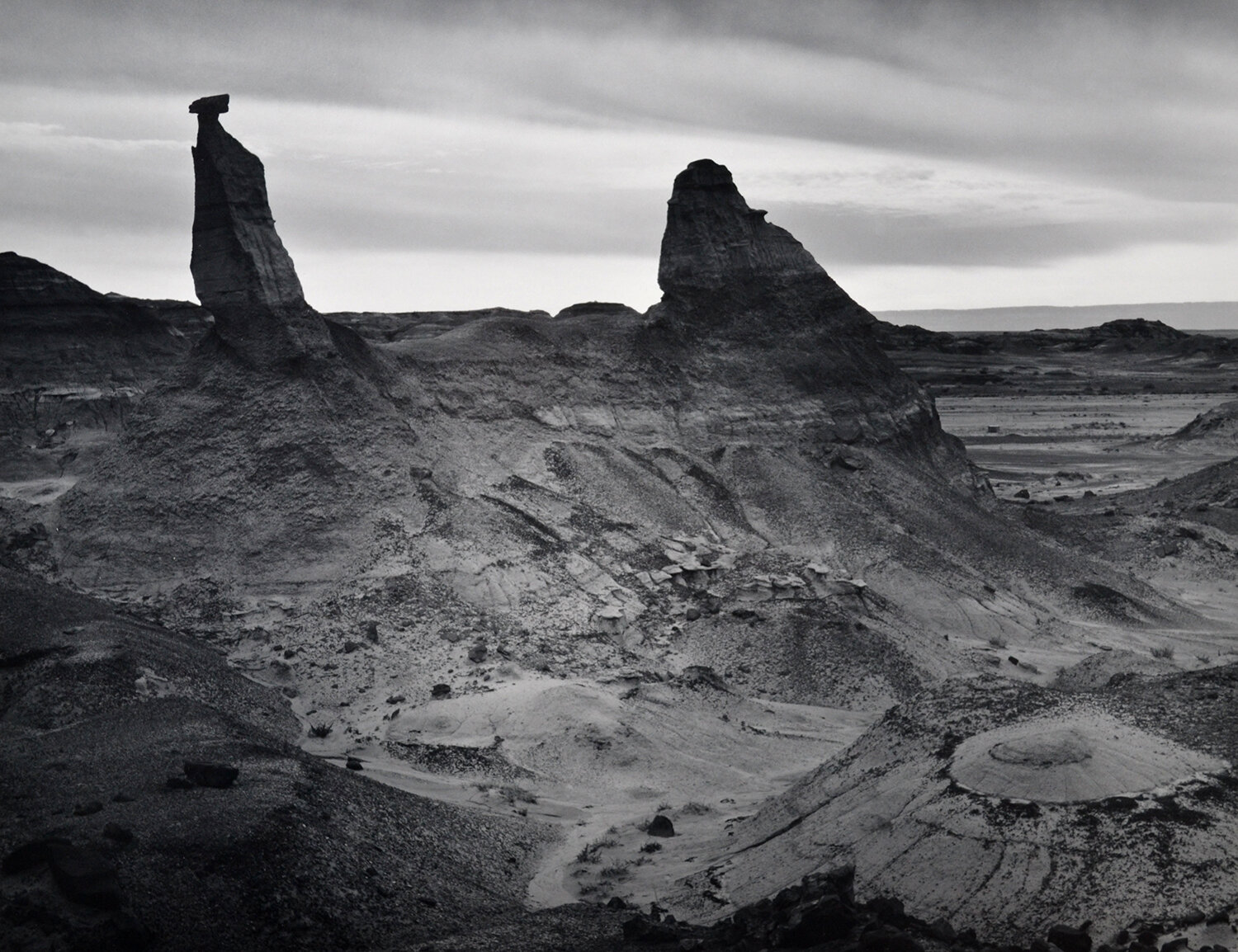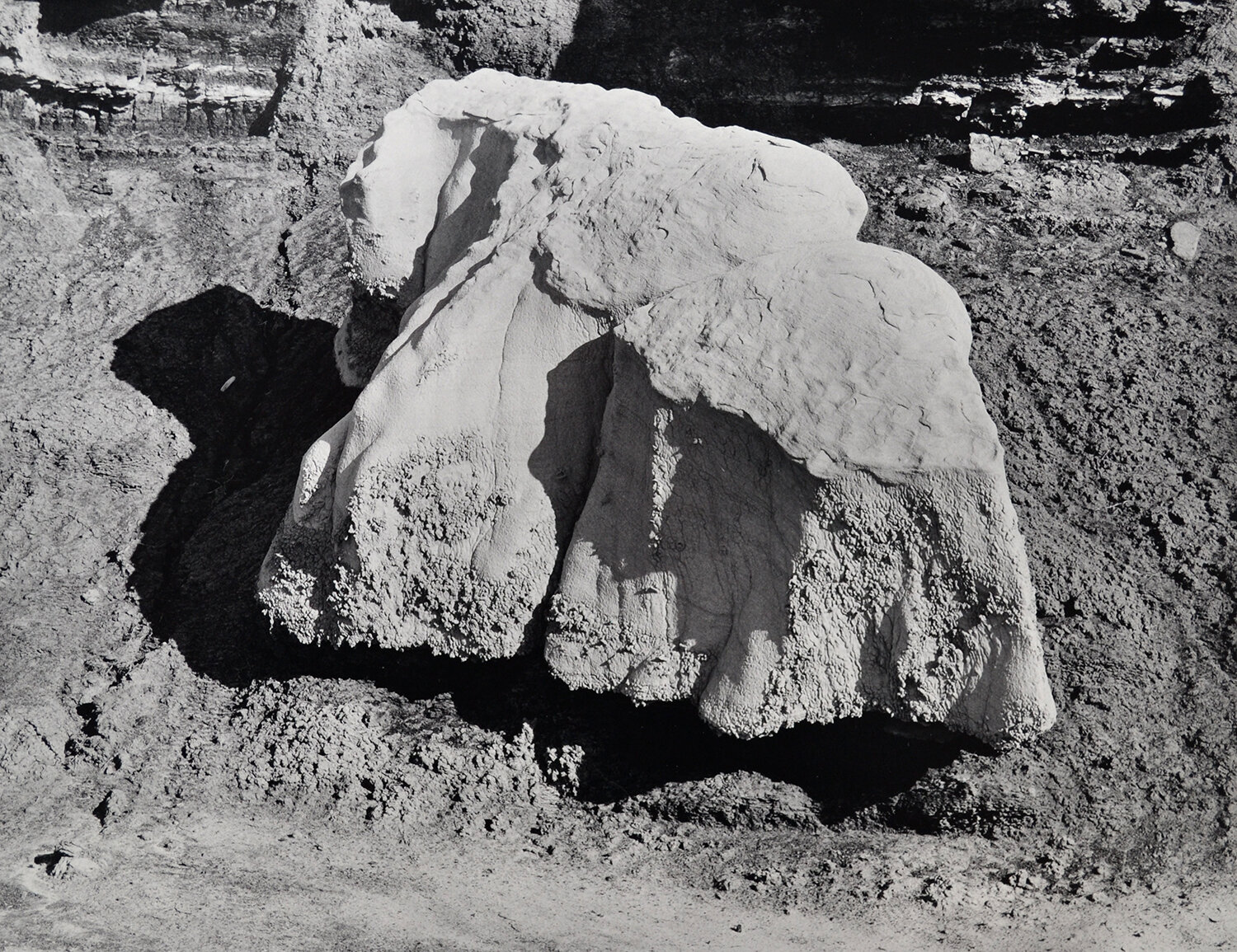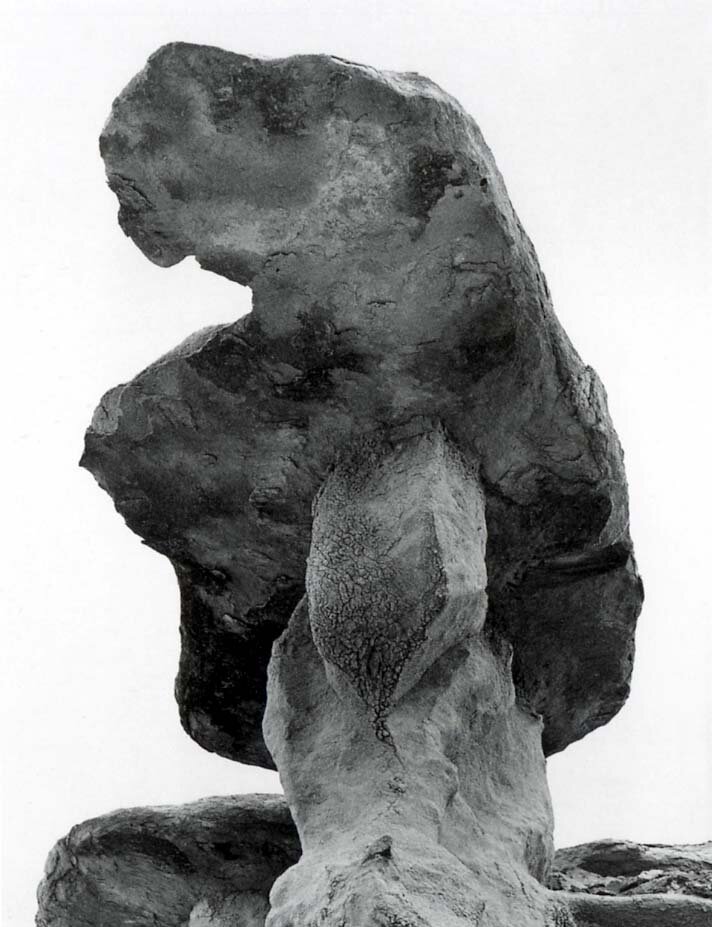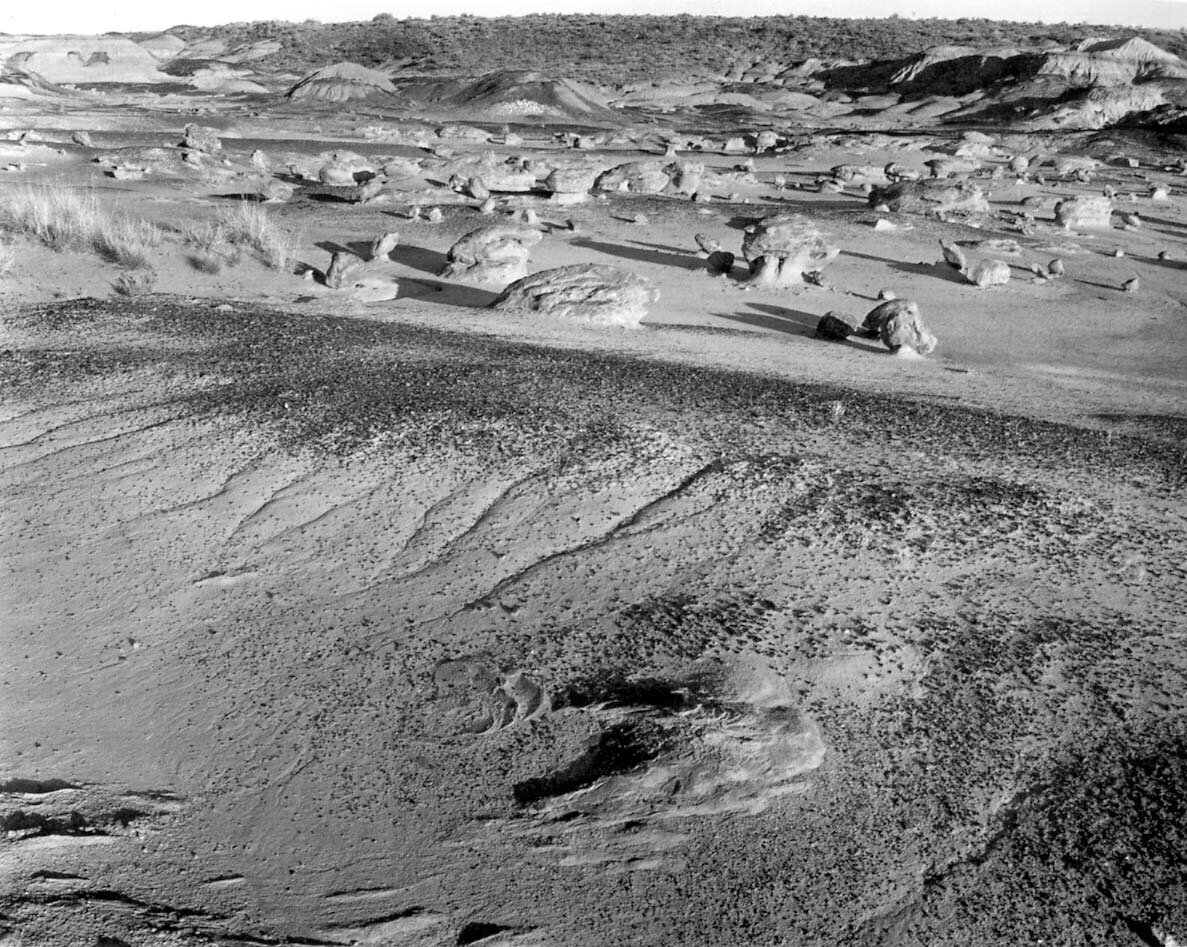Bisti
In northwestern New Mexico, located off the well-traveled roads, is a little-known area of unique geological formations called “hoodoos”: Here the erosion of layered rock of varying hardness formed spires and columns capped with slabs of lighter stone. The bright colors of the mineralized structures, interleaved with thin black bands of coal, add to the beauty of this wonderland. Intrinsic to the mystery and scientific importance of the place are the fossil remains of ancient animals of the Cretaceous Period.
Because of its unusual character, a small part of this eroded badlands – named “Bisti” by the Indians – has been set aside in perpetuity; it will be preserved against greedy exploitation by short-sighted interests that recognize no value beyond immediate gain. For what makes the Bisti vulnerable to attack are those black veins of coal that add so greatly to its beauty and speak so eloquently of its history. The strip miners of coal would not hesitate to destroy this wondrous geological phenomenon and paleontological treasure for a product of ephemeral benefit.
When David Scheinbaum first visited the Bisti badlands, he immediately recognized their beauty and determined to record the area photographically. There, surrounded by these exotic remnants out of the distant past, obsessed by them, he found his inspiration. In the last analysis, nature is the source of all the artist's creative efforts. Even abstract expressionism, which originates in the mind, has its source in nature, if we accept the premise that man is part of nature. The connection, of course, is much closer in the schools of objective realism.
In his attempt to understand nature, the artist is constantly portraying it in painting or slicing out bits in photographs. He believes that an understanding of nature is to be found in its complexity and beauty, not in its utility. Unfortunately, beauty per se has acquired soft, sentimental overtones that are not at all what the artist finds so compelling in nature. What he sees is rather the extraordinary variety in the world around him. This is what inspires him. In this respect the artist and the scientist, particularly the ecologist, have much in common. One expresses his fascination emotionally, in his pictures, while the other expresses the same preoccupation intellectually. The difference is that good science cannot exist with emotion, and art cannot exist without it. Attempts to produce purely intellectual art succeed only to a limited degree, because they have sterilized the emotional content.
The artist is particularly concerned with conservation because of his commitment to nature. He speaks for nature through his art. Because nature is the subject in which he is totally involved, he must believe in conserving nature or he is self-destructive. If the natural world were destroyed, his art would, in proportion to the place it occupies, perish. Piecemeal destruction of wildness amounts to piecemeal destruction of inspiration.
Eliot Porter, Introduction to David Scheinbaum’s Bisti portfolio, 1985
To read more about Bisti click here
To purchase Bisti click here
